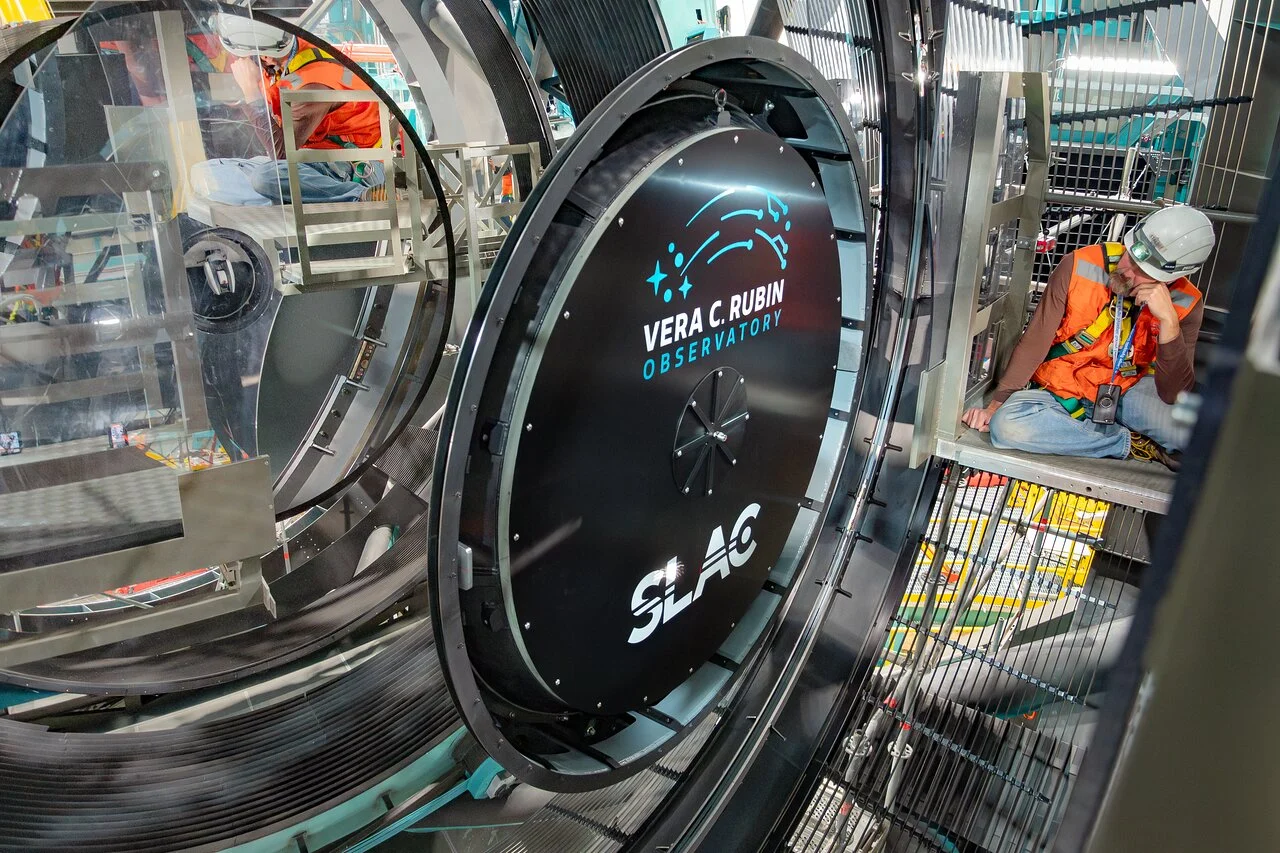Located on a mountaintop in Chile, the nearly complete Vera C. Rubin Observatory will capture the Universe in incredible detail. This week saw another huge step for the observatory with the installation of the car sized - yes car sized - LSST camera onto the Simonyi Survey Telescope. The camera is the largest ever built, weighing in at over 3,000 kilograms with an impressive 3,200 megapixels. Coupled to the 8.4 metre optics of the Rubin will allow it to capture everything that happens in the southern sky, night after night.
Vera Rubin was a leading American astronomer who provided the first compelling evidence for the existence of dark matter and revolutionised our understanding of the cosmos. She earned the National Medal of Science in 1993 and Congress honoured her legacy by naming an observatory in Chile after her. Now, the observatory named in her honour, has reached a significant milestone with the installation of the LSST Camera ahead of first light expected mid-2025.
 Vera Rubin at Work, NOIRLab (Credit : KPNO/NOIRLab/NSF/AURA)
Vera Rubin at Work, NOIRLab (Credit : KPNO/NOIRLab/NSF/AURA)
The build of the camera was completed in April 2024, after which it was safely transported to Chile for installation. This 3200-megapixel device forms the centrepiece of the observatory's advanced optical system, which includes an 8.4-meter primary/tertiary mirror and a 3.5-meter secondary mirror. The installation process was complex, requiring months of testing in a clean room before using a platform lift to move the camera gently to the telescope floor. The team then used a custom made lifting device to precisely position this massive instrument on the Simonyi Survey Telescope.
 Vera Rubin Observatory with the Milky Way (Credit : NSF/AURA/B)
Vera Rubin Observatory with the Milky Way (Credit : NSF/AURA/B)
The installation of the camera represents the culmination of decades of design and construction work and was mounted on the telescope at Cerro Pachón in Chile in early March. It will shortly enter a period of testing before starting to capture its first images and begin the Legacy Survey of Space and Time (LSST). The project is jointly funded by the U.S. National Science Foundation and the Department of Energy's Office of Science, with operations to be collaboratively managed by NSF NOIRLab and DOE's SLAC National Accelerator Laboratory.
The LSST Camera will undergo final testing and integration before capturing massive night sky images, each one large enough to fill 400 ultra-high-definition TV screens. As someone who has dabbled in astronomical imaging, one decent UHD screen full of an image is impressive but 400! I cannot wait for the first image to be released at a 'First Look' event later this year.
LSST Camera Project Manager Travis Lange praised the diverse team behind the world's largest camera, highlighting their incredible achievement, "It has been a treat to watch the biggest camera the world has ever seen being built by such a talented group of people with such a wide range of backgrounds." He continued "It's a wonderful example of what teams of scientists and engineers can accomplish when they are called upon to do what has never been done before."
Source :NSF–DOE Vera C. Rubin Observatory Installs LSST Camera on Telescope
 Universe Today
Universe Today
